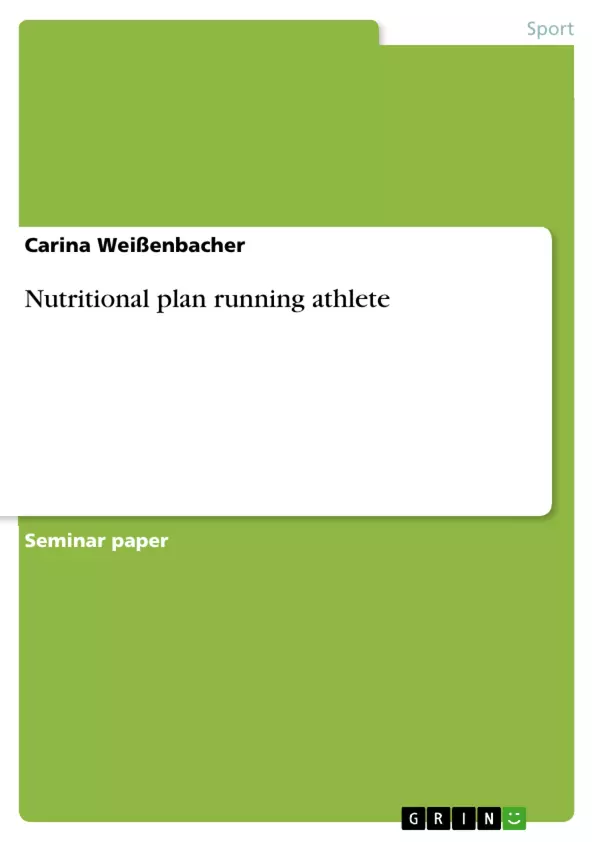Individualized nutritional coaching plan for a running athlete, including personal anthropometrics, biometrics, analysis of sports and training intensity, aim, analysis of actual nutrition and last a nutritional coaching plan.
Inhaltsverzeichnis (Table of Contents)
- Personal information
- Personal details
- Social details
- Medical details
- Anthropometrics
- Assistance requested
- Athlete's own ideas and questions
- Nutrition based complaints
- Client's phase of behaviour change
- Exercise history
- Summary and intensity of sport
- Sports energy systems described
- Sport's energy use (TDEE) described
- Relative distribution of substrate use
- Absolute distribution
- Nutritional history
- Method
- Athlete 2: Nutritional plan
- Nutritional analysis and diagnosis
- Absolute and relative nutrition analysis
- Timing of most relevant nutrients has been reviewed in depth
- Diagnosis proposed regarding the clients points of concern
- Goal
- Nutritional plan
- Advice for energy and macronutrients is properly substantiated
- Timing of nutrient intake is properly substantiated
- Clients questions addressed
- Nutritional plan is viable in practice and offers practical tips for products
- Follow-up consultations to meet goals
- Appendix
- References
Zielsetzung und Themenschwerpunkte (Objectives and Key Themes)
This document aims to provide a comprehensive nutritional analysis and plan for a marathon runner with the objective of reducing body fat and increasing muscle mass to enhance performance. The document covers the athlete's personal information, exercise history, and nutritional history, followed by a detailed nutritional analysis and diagnosis, and finally outlines a tailored nutritional plan.
- Nutritional Analysis and Diagnosis
- Individualized Nutritional Plan
- Performance Enhancement through Body Composition Modification
- Energy Balance and Macronutrient Management
- Practical Nutritional Strategies for Athletes
Zusammenfassung der Kapitel (Chapter Summaries)
- The first chapter focuses on the athlete's personal details, including their age, gender, weight, height, BMI, social details, medical history, and anthropometrics. This section provides a comprehensive overview of the athlete's background and physical characteristics.
- Chapter two delves into the athlete's exercise history, outlining the type of sport, training intensity, and frequency. This information is crucial for understanding the athlete's current fitness levels and training demands.
- Chapter three explores the athlete's energy systems and nutrient distribution, analyzing the breakdown of energy use during their sport and the relative and absolute distribution of substrate utilization. This chapter also examines the athlete's dietary history and the methods used for nutritional assessment.
- The fourth chapter presents a detailed nutritional analysis and diagnosis based on the athlete's information. This section examines the athlete's current nutrient intake, identifies potential areas for improvement, and proposes a diagnosis based on the athlete's specific concerns.
- Chapter five outlines a customized nutritional plan tailored to the athlete's needs and goals. The plan provides specific recommendations for energy, macronutrients, and the timing of nutrient intake. It also addresses the athlete's individual questions and offers practical tips for implementing the plan.
Schlüsselwörter (Keywords)
The primary keywords and focus topics of this document are: marathon running, nutritional analysis, body composition, performance enhancement, energy balance, macronutrients, athlete nutrition, practical nutritional strategies, and tailored plans.
- Arbeit zitieren
- Carina Weißenbacher (Autor:in), 2018, Nutritional plan running athlete, München, GRIN Verlag, https://www.grin.com/document/414033



